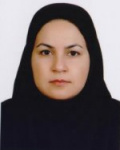| نویسندگان | Leila Makvandi |
|---|---|
| همایش | American Society of Archaeology(ASOR) annual meeting |
| تاریخ برگزاری همایش | 03/ 11/ 2020 |
| ارائه به نام دانشگاه | دانشگاه کاشان |
| نوع ارائه | سخنرانی |
| سطح همایش | بین المللی |
چکیده مقاله
From the royal inscriptions and reliefs is obvious that the Achaemenid very well were aware of their multi-ethnic and multi-cultural Empire. We find this multi-ethnicity in hundreds of the Persepolis Fortification tablets. These administrative texts speak of individuals, travellers and workers referred them by ethnic labeling such as Babylonians, Indians, Carians, Arabs, Egyptians and etc. It seems such ethnic labeling served administrative purposes, but may also have expressed some recognition of their social and legal status. This attitude is, remarkably, reflected in the composition of seal image and style of seals used on the Fortification archive tablets. Therefore, multilingual archive texts, majority Elamite, Aramaic and several texts in other languages not only witness to a multi-ethnic in Achaemenid Heartland, also thousands of seals with diversity in imagery and style emphasis it. As, seals have been used in administrative practice as markers of identity and ownership for millennia. In the Persepolis archives we encounter by richest diversity in seal imagery and style, alongside of main Achaemenid style we also can see styles such as: Assyrian, Egyptian, Greek and etc. Main question are these seals reflects the ethnicity of their owners? Is there any clue about the affection of these styles on the Achaemenid court and regional styles? by bringing together seal style and textual evidence of Persepolis Fortification archive we can recognize that most of these seals belongs to foreign travellers from Sardis, Greek, Egypt, Babylonia, Bacteria, Arachosia, India and etc., which travelling to Achaemenid Heartland. Diversity of seal styles in archive show that several style created by mixed of these styles with regional styles.
